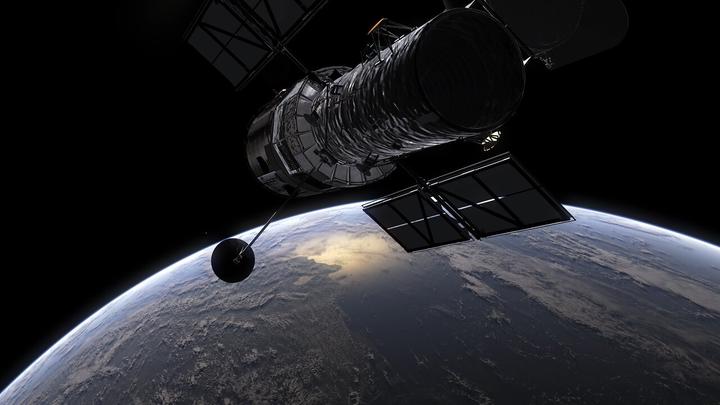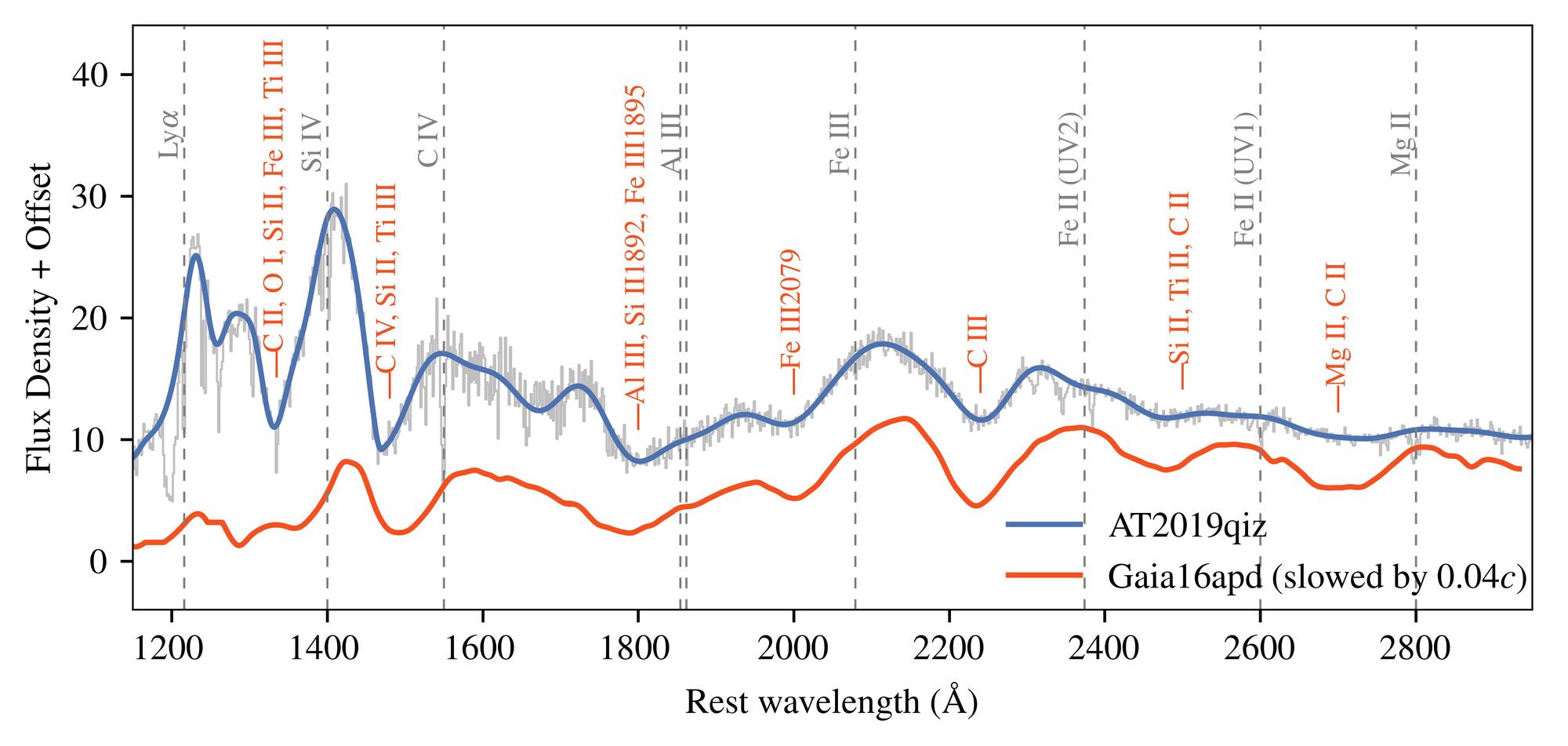UV Spectroscopy of TDEs
 Hubble Space Telescope (Photo Credit ESA)
Hubble Space Telescope (Photo Credit ESA)
UV absorption lines signify the presence of outflows and have been commonly detected in a subclass of quasars (broad absorption line quasars; BALQSOs). Outflows are ubiquitous in accretion systems across a wide mass range, from protostars to supermassive black holes and so for tidal disruption events (TDEs). Using the STIS spectrograph onboard the Hubble Space Telescope (HST), I lead an ongoing investigation into the occurrence and evolution of absorption features in the UV spectra of TDEs. Currently, 4 out of 5 TDEs show broad UV absorption features moving at 1–5% speed of light in their evolution1.
For one of the most nearby TDEs, AT2019qiz2, we obtained an HST spectrum as early as 13 days post peak light. The early UV spectrum (Fig 1) exhibits transient broad Fe absorption besides broad high- and low-ionization absorption features travelling at 5% speed of light. This FeLoBAL system is seen for the first in a TDE. The Fe and low-ionization absorption lines faded in a spectrum obtained around 2 months later.
Our first UV spectrum is also remarkably similar to a superluminous supernova, Gaia16apd, perhaps indicating some common physics related to outflowing material around a black hole. This new connection suggests that the physical conditions in TDEs are similar to that in engine-powered supernovae during their early evolution, possibly owing to wind reprocessing, which has significant implications for the interpretation of both kinds of events.

References
-
Discovery of Highly Blueshifted Broad Balmer and Metastable Helium Absorption Lines in a Tidal Disruption Event Hung et al. (2019) ApJ 879, 119 ↩︎
-
Discovery of a Fast Iron Low-ionization Outflow in the Early Evolution of the Nearby Tidal Disruption Event AT2019qiz Hung et al. (2021) ApJ. ↩︎